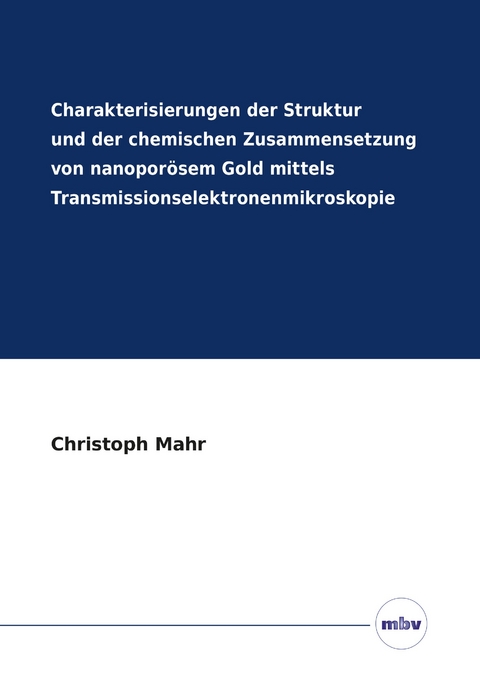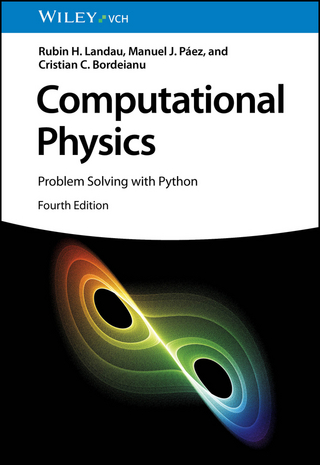
Charakterisierungen der Struktur und der chemischen Zusammensetzung von nanoporösem Gold mittels Transmissionselektronenmikroskopie
Seiten
2018
|
1. Aufl.
Mensch & Buch (Verlag)
978-3-86387-945-7 (ISBN)
Mensch & Buch (Verlag)
978-3-86387-945-7 (ISBN)
- Keine Verlagsinformationen verfügbar
- Artikel merken
Nanoporous gold (npAu) has attracted increasing interest in the last decades because of many possible applications in the fields of catalysis, sensing and actuation. Gold as a catalyst is particularly interesting because of its nontoxic nature, chemical stability and its ability to promote selective reactions at low temperatures. NpAu is formed by corrosion of alloys of gold and a less noble metal such as silver in an acid. During this process of dealloying the less noble atoms are dissolved from the alloy and the gold atoms reorder on the crystal lattice forming a porous network built-up of interconnected ligaments and open pores which is penetrable for gases or liquids. The large surface of 3-15m2=g and the large surface curvature of the ligaments providing a high density of low-coordinated surface atoms render this material a designated catalyst.
Properties of npAu depend to a large extend on its structure and chemical composition. Sizes of pores have an in uence on how deep atoms or molecules can penetrate the porous samples during chemical reactions. Sizes of ligaments are expected to be related to the density of low-coordinated surface atoms as smaller structures should exhibit a larger surface curvature and hence a higher density of low-coordinated surface atoms. Both sizes can be tuned by variations in the dealloying process or by post dealloying heat-treatments. The amount of the residual silver remaining in the porous structure after dealloying can also be adjusted in the sample preparation process.
For a better understanding and improvement of functional materials such as npAu a characterization of the samples is mandatory. In this thesis npAu is characterized by transmission electron microscopy. The characteristic size distribution of ligaments and pores is investigated as a function of the residual silver content, showing that ligaments and pores are larger the less residual silver remains in the sample. Furthermore, it is shown that ligaments and pores coarsen during chemical reactions. Surprisingly, the density of low-coordinated surface atoms is to a large extent independent of characteristic structure sizes within the margins of error. The quantitative spatial distribution of the residual silver is investigated by energy dispersive X-ray tomography measurements. It is found that silver is distributed inhomogeneously within the porous structure. Silver-rich regions can be found within the ligaments. Whereas some of these regions are buried within the ligaments others are connected to the surfaces of the ligaments. The silver concentration in the silver-rich regions can be as large as in the master alloy.
The strain state at the surfaces of the ligaments has an in uence on the reactivity. For this reason, the strain state of npAu is characterized in this thesis revealing an inward relaxation of the crystal lattice at the topmost atomic surface layer of the ligaments. The crystal lattice in partially cylindrically shaped ligaments is compressed along the ligament axis and expanded in radial direction with respect to the bulk gold crystal lattice. The methods used for the measurements of strain are characterized by evaluation of simulations concerning interpretability of the results and concerning precision and accuracy of the measurement. Finally, structure and chemical composition of npAu dealloyed from various alloys are compared. This comparison reveals that the structure of npAu dealloyed from gold-silver alloys is more homogeneous than the structure of npAu dealloyed from goldcopper alloys. Copper-oxides can be found within npAu dealloyed from gold-copper alloys filling large parts of the porous structure.
Properties of npAu depend to a large extend on its structure and chemical composition. Sizes of pores have an in uence on how deep atoms or molecules can penetrate the porous samples during chemical reactions. Sizes of ligaments are expected to be related to the density of low-coordinated surface atoms as smaller structures should exhibit a larger surface curvature and hence a higher density of low-coordinated surface atoms. Both sizes can be tuned by variations in the dealloying process or by post dealloying heat-treatments. The amount of the residual silver remaining in the porous structure after dealloying can also be adjusted in the sample preparation process.
For a better understanding and improvement of functional materials such as npAu a characterization of the samples is mandatory. In this thesis npAu is characterized by transmission electron microscopy. The characteristic size distribution of ligaments and pores is investigated as a function of the residual silver content, showing that ligaments and pores are larger the less residual silver remains in the sample. Furthermore, it is shown that ligaments and pores coarsen during chemical reactions. Surprisingly, the density of low-coordinated surface atoms is to a large extent independent of characteristic structure sizes within the margins of error. The quantitative spatial distribution of the residual silver is investigated by energy dispersive X-ray tomography measurements. It is found that silver is distributed inhomogeneously within the porous structure. Silver-rich regions can be found within the ligaments. Whereas some of these regions are buried within the ligaments others are connected to the surfaces of the ligaments. The silver concentration in the silver-rich regions can be as large as in the master alloy.
The strain state at the surfaces of the ligaments has an in uence on the reactivity. For this reason, the strain state of npAu is characterized in this thesis revealing an inward relaxation of the crystal lattice at the topmost atomic surface layer of the ligaments. The crystal lattice in partially cylindrically shaped ligaments is compressed along the ligament axis and expanded in radial direction with respect to the bulk gold crystal lattice. The methods used for the measurements of strain are characterized by evaluation of simulations concerning interpretability of the results and concerning precision and accuracy of the measurement. Finally, structure and chemical composition of npAu dealloyed from various alloys are compared. This comparison reveals that the structure of npAu dealloyed from gold-silver alloys is more homogeneous than the structure of npAu dealloyed from goldcopper alloys. Copper-oxides can be found within npAu dealloyed from gold-copper alloys filling large parts of the porous structure.
| Erscheinungsdatum | 25.01.2019 |
|---|---|
| Verlagsort | Berlin |
| Sprache | deutsch |
| Maße | 210 x 148 mm |
| Themenwelt | Naturwissenschaften ► Physik / Astronomie |
| Technik ► Elektrotechnik / Energietechnik | |
| Schlagworte | charakteristische Strukturgrößen • nanoporöses Gold • Oberflächenrauigkeit • Optimierung von Verzerrungsmessungen • Transmissionselektronenmikroskopie |
| ISBN-10 | 3-86387-945-7 / 3863879457 |
| ISBN-13 | 978-3-86387-945-7 / 9783863879457 |
| Zustand | Neuware |
| Haben Sie eine Frage zum Produkt? |
Mehr entdecken
aus dem Bereich
aus dem Bereich
von den Werkzeugen über Methoden zum TQM
Buch | Softcover (2024)
Springer Fachmedien (Verlag)
32,99 €
Problem Solving with Python
Buch | Softcover (2024)
Wiley-VCH (Verlag)
109,00 €


